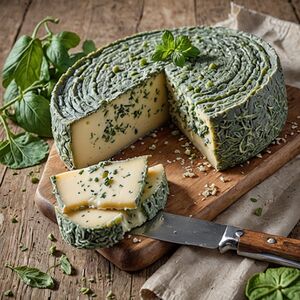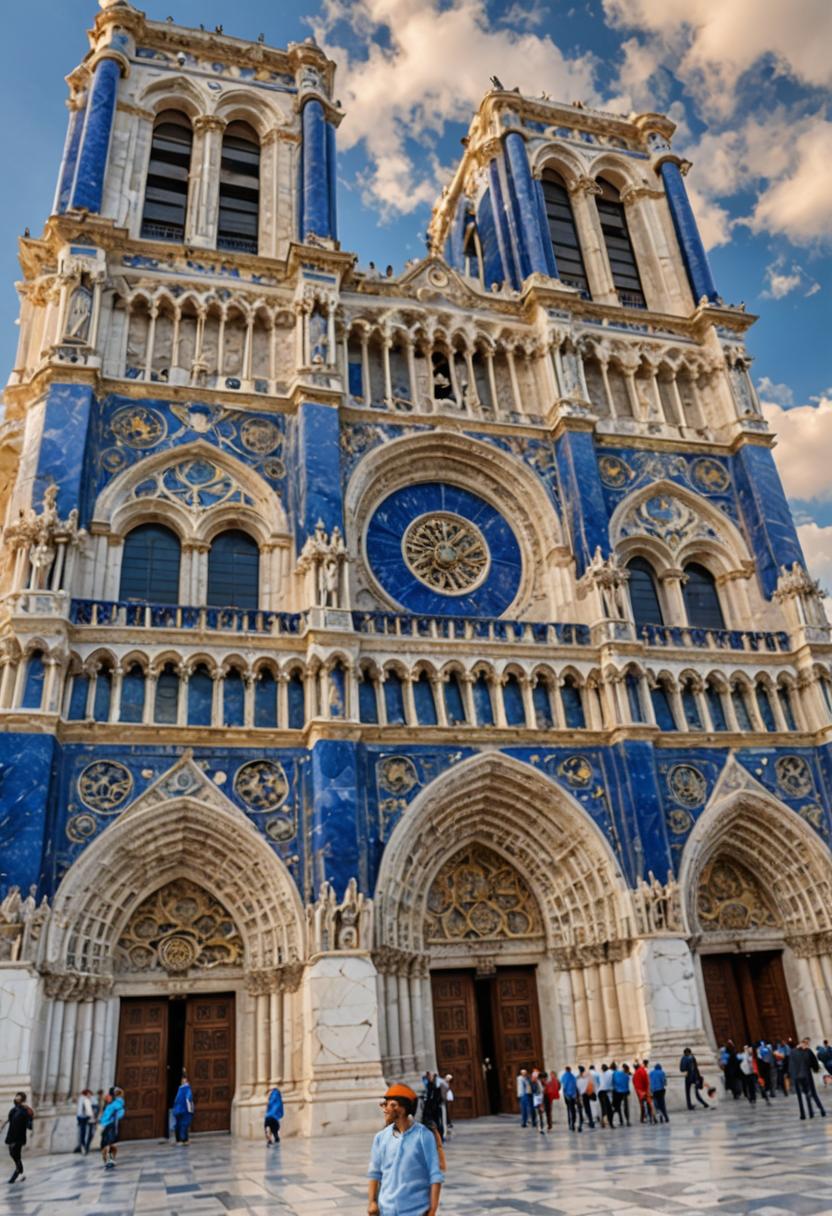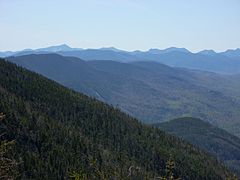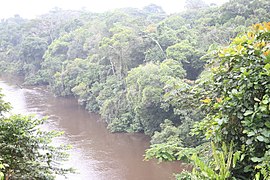Terazta: Difference between revisions
mNo edit summary Tags: Visual edit Mobile edit Mobile web edit |
mNo edit summary Tag: 2017 source edit |
||
| Line 211: | Line 211: | ||
Milk typically comes from either goats or sheep and is usually processed into Yogurt and cheese. Yogurt is very common and I'd used as a marinade for meat or eaten with jams, nuts and fresh or dried fruits. | Milk typically comes from either goats or sheep and is usually processed into Yogurt and cheese. Yogurt is very common and I'd used as a marinade for meat or eaten with jams, nuts and fresh or dried fruits. | ||
[[File:Formachu.jpg| | [[File:Formachu.jpg|thumb]] | ||
[Formachu, commonly eaten with herbs, garlic and olives spread onto bread] | [Formachu, commonly eaten with herbs, garlic and olives spread onto bread] | ||
Revision as of 20:23, 30 May 2024
Republic Of Teŕazta Respublika Teŕazta | |
|---|---|
Motto: Oŕemuš, Vivamuš, Gŕatiamuš Let us pray, Let us live, Let us give thanks | |
Anthem: Teŕazta, Laus Tibi Media:TeŕaztaNathionalAnthem.mp3 | |
 Location of XXX (dark green) In XXX (gray) | |
| Capital | Aureia |
| Largest city | Palmero |
| Official languages | Your language Your language Teŕatzan |
| Ethnic groups | Teŕaztanii, Caphiric, |
| Religion | Your religion |
| Demonym(s) | Taraztani(noun) XXXan (adjective) |
| Government | Classic Republic |
• Princeps Senatoris de Terazta | Scipio Gauius Publius |
| Legislature | The Senate Of The People Of Teŕazta. |
| Your upper house | |
| Your lower house | |
| Establishment | |
• An event | 878ad |
| Population | |
• Estimate | Your population |
• Census | 50,567,776 |
| GDP (nominal) | estimate |
• Total | Your GDP = GDPPC x Population (This is calculated for you after first entry) |
• Per capita | Your GDP PC |
| Gini | Your gini coefficient Error: Invalid Gini value |
| Currency | Sasterio (RTS) |
| Driving side | right |
Terazta, officially the Republic Of Teŕazta, is a country in eastern Sarpedon. It is neighbored by Caphiria.
Terazta is a member of the League of Nations.
Etymology
The nation of Teŕazta sits in a highly mountainous region of Sarpedon known as “Xelphia”. in the early history of the region slaves, prisoners and the poor of the First imperium were sent to this area, referred to by it's inhabitants as “Terra Resta" which translates as “The land that remains” or “The leftover land.” It's Poor, rocky soil yielded little wheat and made farming difficult. Over time this insult for the land grew to become it's name and over millenia “Terra Resta” would replace “xelphia”. And would eventually become “Teŕazta” is the country's language.
History
First Era
The region of Xelphia began to see the arrival of Adoneri Peoples beginning in the 18th century, BC. The best recorded of these peoples was the Polentii civilization, a People who built their villages high above the ground within mountains and oceanside cliffs.
Excavation have shown that the Polentii built small replica huts out of the ashes of their dead which they would mix with clay and inscribe the name of the dead. With these they would contruct small villages on altars in their homes, engaging in a sort of ancestor worship.
The Polentii civilization would be asimiliated into The First Imperium in the 3rd century BC after a long decline.
After the region's incorporation into the imperium, it became a dumping ground for all "Personae non Gratae". This religious and politcal disidents, Prisoners and other undesirables. The region became named "Terra Resta" for its poor, rocky soil and wilderness. This area of Sarpedon would be settled by tens of thousands who were employed for mining and quarrying. Because despite the poor soil for agriculture the country's mountains were rich with Precious metals, gemstones and ore.
Second era
By the 9th century, the Oduniyyad Caliphate had arrived on the doorstep of Xelphia. Alerted by Yanubani traders who had seen the wealth of the isolated region, the Islamic general Ibn Al-bageezi, beset the mountainous land. Within motnhs, he swept up the land easily and found little resistance from the regional which had been lleftto it's own devices following the decline of The First Imperium.
From the time of AD 890, until its liberation in the 13th century, the people of Teŕazta were under strict Islamic rule. Women were forced to cover themselves with niqaabs and hijabs. Churches were closed and converted into mosques. The consumption of pork was banned. Anti-Christian policies were established which required Valerites to pay a tax. They were also forced the indiginity of having to build doors which were unusually low, making them bow their heads when entering or exiting their homes. They suffered many restrictions in travel and fewer rights as comparsd to islamic citizens.
One of the most grueling and extensive slave trades occured during this time. under the Caliphate, Christians were forced to pay a tax. Those who could not pay were subject to enslavement. This policy led to the enslavement of hundreds of thousands of Teŕaztanii. Sent abroad or forced to march through the mountains hauling ore, less than 1 in 5 male slaves survived 10 years. Many women were stolen from coastal villages and towns and sold in Audonia. Open air slave markets were common in the Coastal city of Al-Mahif (Modern Day Aureia). A surviving account recalls the state of these markets;
"It is in such a place as Al-Mahif that a man may question the existence of a just god. The christians, forced to pay taxes for their faith but unable to find the coin, find themselves in the holding pits of the traders here. No man here to buy sees people nor families. Just commodities. A son of 5 years? A copper piece. His mother? Fair skinned and dark haired? A silver piece. Her husband for a brass piece. The grandfather for half a copper. All to different traders. The stench is unbearable, the sound of flies and fast speaking auctioneers greets you before the screams do. You feel the despair before you hear the pleas for mercy and the weeping. You smell the people before you see them. What a wretched place."
Third era
What were your country's first major moves on an international level?
Fourth era
Did your country ever have a period of significant decline or internal struggle?
Fifth era
Was your country subject to imperialism later in its life, or was it an imperial power?
Sixth era
How did the 20th century affect your country?
Geography
-
First lovely location
-
Second lovely location
-
Third lovely location
-
Fourth lovely location
-
Fifth lovely location
-
Sixth lovely location
What is the general explanation of how your country exists within the world?
Climate and environment
Is your country hot or cold?
Government and Politics
How is your country ruled or governed?
Executive
Who is responsible for making high level choices in your country? Does it have a President or King?
Legislative
Who decides the laws for your country? Is there political parties and a legislature?
Federal subdivisions
How is your country divided? Are there states or provinces, or is the country directly governed from the capital as a unitary state?
Politics
What political factions exist? Who has ruled predominantly?
Law
What kind of laws and legal system does your country employ?
Demographics
What kind of people live in your country?
Ethnicity
What ethnic groups make up your country?
Language
What language or languages do your country's people use? Are there any previously used languages no longer common? Are these languages native to your country or shared with another?
Religion
Religious affiliations in the XXX (20XX)
What do your country's people believe in religiously, if anything? How many groups are there?
Education
Education among the Taŕatzanii is largely done by parents in private homes or by private tutors.
Culture and Society
What do your people do, and what are they like?
Education
Following the Reformation of the Senate in 1960, The Department of Education was disbanded and there has been no plan to restore the pre-restoration era education system. Instead, The Government of Teŕazta has allocated funds in order to provide learning materials and supplies for private households to teach children.
The Valerite Church also provides educational opportunities and maintains a large number of Schools, universities and libraries.
Attitudes and worldview
The overall attitude of the Teŕaztanii can be summed up with the motto of their nation: Oŕemuš, Vivamuš, Gŕatiamuš; Let us Pray, let us live, let us give thanks.
They are a people who do not seek dominance over others, they do not engage in foreign wars of aggression and only seek to eek out their own place within the world. The People of Teŕazta respect their traditions, their culture and their heritage.
Kinship and family
How are families or kinship groups structured in your country?
Cuisine
Teŕaztan Cuisine is largely defined by it's Geography. During the earliest days it's People have struggled to grow food in the region and relied heavily on Pulses (Lentils, peas, beans and fava beans) root vegetables such as Carrots, parsnips, turnips and beets, and Less "Noble" grains such as Spelt, Barley and Rye.
The people of Teŕazta have a strong tea drinking culture, first introduced by Yanubani traders in the 8th century AD along with melons, cucumbers and sugar.
Grains:
As previously stated, cereal crops which are consumed by many countries have a difficult time growing in the rocky and poor soil of Teŕazta. Grains such as Rye, barley, spelt and einkorn have long since replaced wheat, oats and corn as the staple grains.
The Teŕaztanii have many different forms of bread with the most common being the "Planacŕuse" which is a squat loaf scored with a wide cross on the top. This is usually produced from barley which has been boiled with Molasses and turned into a paste before being combined with spelt flour. This process unlocks many nutrients locked away in barley and is believed to have its origin in "puls" which is a boiled gruel. It would have been made from a variety of grains, but most famously that of barley which was the staple of Gladiators in antiquity.
The People of Teŕazta also enjoy a variety of other breads;
Militus: a hard bread which has been twice baked and is typically pounded into crumbs and boiled with milk, broth or water. Commonly issued to soldiers. Typically coin shaped with a hole in the middle, in ancient times it would have been tied to a string when issued.
Pons: a mountain bread that is flat and easily rolled and carried, typically used for meat or sopping up the juices thereof. Typically served complimentary at "Carnae" or restaurants which specialize in meat.
Circae: a round sweet bread made with eggs. This is commonly served at weddings and filled with a melon preserve. A symbol of fertility and unity it is commonly adorned also with a braid on top.
The Teŕaztanii do not have a traditional pasta culture, although pasta has caught on in more recent years.
Dairy:
consumed widely among the population of Teŕazta, Dairy is an important source of fat and protein. Yogurt, Cheese, butter, milk and cream are staples of the Teŕaztan diet.
Milk typically comes from either goats or sheep and is usually processed into Yogurt and cheese. Yogurt is very common and I'd used as a marinade for meat or eaten with jams, nuts and fresh or dried fruits.

[Formachu, commonly eaten with herbs, garlic and olives spread onto bread]
cheese is commonly consumed on a daily basis and Teŕatzan cuisine has many different kinds from Formachu, which is a soft and stinky cheese with a greenish grey rind. To Pernasa, which is is hard and has been left to dry and age in caves for years.
vegetables:
Meat:
Within Teŕazta the most commonly consumed meat is that of pork, goat and lamb. Cattle and horses were traditionally viewed as high status animals with the former typically being used for farming. Chickens, although very popular in households for egg produciton, are not typically consumed. Rooster is commonly eaten once or twice a month.
Within Teŕaztan Thermopoli culture there are restaurants which specifically cater to meat consumption. These restaurants, called "Carnae" are very common within cities in towns. Typically serving smoked or grilled animal products the Carnae cater to the palet of Teŕaztanii.
Cuts of meath which are fried, forcemeat balls made of offal and wrapped in fat, sausges and cuts of meat wrapped in grape leaves and grilled on skewers are all popular means to consume meat in Teŕatza.
Gamebird, poultry and fowl are particular delicacies. The Teŕaztanii are known for their songbird farms where they Grow a variety of species ranging from birds from the countryside to imported songbirds of foreign lands. These delicate creatures are typically killed before being "pickled" in a cognac or rum and then steamed over rose water and sweet herbs and are served whole, being eaten in one or two bites. Another beloved dish is a honeyed quail smoked over tea leaves. But Goose, peacock, Duck, sea birds, swan, grouse and guinea fowl are also delicacies.
Chaecium culture
Tea time, known as "chaecium" in Teŕatzan, is akin to a siesta time for the people of the country and is a 3 hour long affair of snacking, tea drinking and relaxing. Tea was
Beginning around 2pm and ending around 5 pm, the lady of the household will brew enough tea for the entire time, preparing a plethora of small snacks and games for those taking part will enjoy. Common snacks are:
Miglae: small steamed buns filled with pistachio and almond paste, flavored with lemon or sumac and glazed with a glaze of powdered sugar, rose water and a colorant (usually saffron)
Glirae: rolls reminiscent of mice and filled with anything from pastry cream to ground beef and cheese. Typically fried.
Plasenta: a cheese cake made of eggs, goats cheese, sugar and baked with a shell of slivered almonds. Typically flavored with almond liquor
Dulcae domae: dates stuffed with ground nuts, encased in a caramel and seasoned with some salt and spices.
Glabi: round donuts, made of spelt flour and filled with cheese then fried and rolled in honey and coated with cinnamon and Poppy seeds.
Religion
 [the Cubiculos Of Saint Orado of Palmeri]
[the Cubiculos Of Saint Orado of Palmeri]
The mainstream religion within Teŕazta is the Valerite Church, a Sui Iuris Church which is in communion with the Catholic Church. Founded some time in the 2nd century AD by St. Quintus Valerius. P
The Rite began in the caves and mines of Xelphia among the slaves and prisoners who toiled
Arts and Lite
What type of art do your people make? Do they have a tradition of painted art, well-crafted television shows, or great music?
Sports
Does your country have any major sports leagues? What types of sports are played, both professionally and for fun by your country's people?"
Symbols
Are there any prominent symbols which are well known to represent your country?
Economy and Infrastructure
How does your country's economy work?
Industries and Sectors
What are the largest parts of your economy in terms of what they do?
Currency
What exchange systems are used within your country's economy?
Healthcare
How do people in your country procure medical care? How is it paid for?
Labor
How is labor organized within your country? Are there any social institutions or unions which deal with labor concerns?
Transportation
How do people in your country get around? Is there a major highway system as well as sea- and airports?
Energy
What type of energy keeps your nation going? Are you renewable or use fossil fuels, and if you are renewable, how recently did your country transition?
Technology
How advanced is your country? Is it an innovator, or does it largely import new developments?
Military
How large is your country's military? Is it large but poorly equipped or small and elite? Does your country have a martial tradition?







